Peningkatan Strategi dan Metode Pembelajaran Guru PAI dalam Era Revolusi industri 4.0
 Abstract views: 1857
,
Abstract views: 1857
,
 PDF downloads: 1126
PDF downloads: 1126
 Untitled downloads: 0
Untitled downloads: 0
Abstract
The globalization becomes the reason of this theme. This is the flow that cannot be banned to enter Indonesia. The modern development of technology and the starting of the industrial revolution era 4.0 which stressed the digital economy, artificial intelligence, big data, and the robotic system cannot be stopped anymore. Facing this challenge, the teaching and learning activities in school are forced to change, including forming qualified teachers for our future. As we know that a teacher has a big role in education, he is both a facilitator and a guide. These roles give a teacher a bigger responsibility not only to transfer knowledge but also to value teaching. He also needs to facilitate the students to be ready to face the industrial era by giving intensive guidance. Therefore, as teachers, we need to be more creative, selective, and active to accommodate all students’ needs and be more sensitive to the students’ psychological condition. A teacher is not only needed to be good in managing the class but also having good teaching skills, empowering learning sources, understanding students’ emotions, and others. In this program, the facilitator will strengthen the teacher’s skill in using various and updated methods so that it can be made as a reference for teachers of PAI in the high school level.
(Pemilihan tema tersebut bermula dari arus globalisasi yang sudah tidak terbendung masuk ke Indonesia. Disertai dengan perkembangan teknologi yang semakin canggih, dunia kini memasuki era revolusi industri 4.0, yakni menekankan pada pola digital economy, artificial intelligence, big data, dan robotic. Menghadapi tantangan tersebut, pengajaran di sekolah pun dituntut untuk berubah, termasuk dalam menghasilkan guru berkualitas bagi generasi masa depan. Mengingat posisi pendidik yang sangat signifikan sebagai fasilitator dan pembimbing, maka dari sini sesungguhnya pendidik memiliki tugas yang lebih berat tidak hanya memegang fungsi transfer pengetahuan akan tetapi pendidik juga harus mampu menfasilitasi siswa dalam mengembangkan dirinya disertai dengan bimbingan yang intensif. Oleh karena itu pendidik dituntut untuk lebih kreatif, selektif, dan proaktif dalam mengakomodir kebutuhan siswa guru juga lebih peka terhadap karakteristik maupun psikis siswa. Guru bukan hanya dituntut untuk bisa menguasai teknik pengelolahan kelas, keterampilan, mengajar, pemanfaatan sumber belajar, penguasaan emosional siswa, penguasaan kondisi kelas dan sebagainya. Dalam pengabdian masyarakat ini akan dimantapkan penerapan metode pengajaran yang lebih bervariasi dan terkini sehingga bisa menjadi bahan referensi kepada guru- guru PAI tingkat sekolah menengah pertama dalam mengajar).
Downloads
References
Azra, A., & Zamhari. (2006). Mencetak Muslim Modern. Jakarta: Raja Grafindo Persada.
Baharuddin. (2007). Teori Belajar dan Pembelajaran. Yogyakarta: Ar Ruzz Media.
Haris, Abd., & Sholehuddin. (2015). Inovasi Pendidikan dan Pembelajaran: Merajut Asa Pendidikan Islam di Tengah Kontestasi dalam Sistem Pendidikan Nasional. Surabaya: Imtiyas.
Otib, S. H. (2017). Materi Pokok Metode Pengembangan Moral dan Nilai-nilai Agama (7th ed.). Tangerang Selatan: Universitas Terbuka.
Rusydiyah, E. F., & Praja, T. S. (2019). Joyful Learning in Fiqh Lesson Using Vlog: A Case Study at 26 Muhammadiyah Kalitengah Islamic Junior High School Lamongan. TADRIS: Jurnal Pendidikan Islam, 14(2), 147–160. doi: 10.19105/tjpi.v14i2.2750
Sa’diyah, H., & Nurhayati, S. (2019). Pendidikan Perdamaian Perspektif Gus Dur: Kajian Filosofis Pemikiran Pendidikan Gus Dur. TADRIS: Jurnal Pendidikan Islam, 14(2), 175–188. doi: 10.19105/tjpi.v14i2.2759
Subanda, M. A. (2013). Psikologi Agama dan Kesehatan Mental (1st ed.). Yogyakarta: Pustaka Pelajar.
Zaini, Z., & Ramlan, R. (2019). Penguatan Pendidikan Aqidah Anak dari Penyimpangan Budaya Online. TADRIS: Jurnal Pendidikan Islam, 14(2), 201–214. doi: 10.19105/tjpi.v14i2.2736.
Copyright (c) 2020 PERDIKAN (Journal of Community Engagement)

This work is licensed under a Creative Commons Attribution-NonCommercial 4.0 International License.
In order for PERDIKAN to publish and disseminate research articles, we need publishing rights. This is determined by a publishing agreement between the author and PERDIKAN. This agreement deals with the transfer or license of the copyright to PERDIKAN and authors retain significant rights to use and share their own published articles. For both subscription and open access articles, published in proprietary titles, PERDIKAN is granted the following rights:
- The right to provide the article in all forms and media so the article can be used on the latest technology even after publication.
- The authority to enforce the rights in the article, on behalf of an author, against third parties, for example in the case of plagiarism or copyright infringement.
Copyright aims to protect the specific way the article has been written to describe an experiment and the results. PERDIKAN is committed to its authors to protect and defend their work and their reputation and takes allegations of infringement, plagiarism, ethic disputes and fraud very seriously.
If an author becomes aware of a possible plagiarism, fraud or infringement we recommend contacting their PERDIKAN publishing contact who can then liaise with our in-house legal department. Note that certain open access user licenses may permit


1.png)


1.png)


